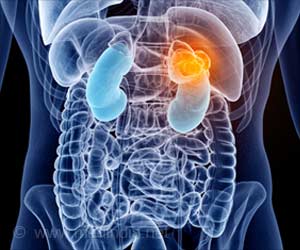Scientists at Harvard Medical School have found that very dissimilar reactions take place even in genetically similar cells. This could be significant for cancer treatment.
Scientists at Harvard Medical School have found that very dissimilar reactions take place even in genetically similar cells. This could be significant for cancer treatment.
Research leader Peter Sorger, a professor of Systems Biology, has revealed that such discrepancies result from protein levels that vary from cell to cell, even among cells that are identical genetic twins.He further says that such protein levels and their subsequent traits can be passed down to daughter cells, a heritability that has nothing to do with genetics.
"Genetics are permanently heritable, while these protein levels are temporarily heritable. But this temporary inheritance can make all the difference in the world when it comes to the effectiveness of certain medications," Nature magazine quoted Sorger as saying.
During the study, the researchers looked at a molecule called TRAIL, which causes cells to commit suicide, a process scientists call apoptosis.
Studies aimed at harnessing TRAIL's power to directly target cancer cells have not achieved a 100 per cent success rate to date, and the researchers wanted to figure out why.
The researchers took both cancerous and non-cancerous cells and exposed them to varying doses of TRAIL. Although the cell lines were known to be vulnerable to the molecule, a fraction always managed to survive.
Advertisement
An immediate explanation might be that the group had developed some sort of genetic defense.
Advertisement
"We knew that there were clearly factors at work here that were not genetic. Genetic resistance would remain uniform in subsequent generations. But the factors at work here were clearly more dynamic," Spencer said.
With the aid of a variety of imaging techniques, the researchers finally found that even though the cells were genetically identical, the actual numbers of proteins in each cell varied.
The researchers revealed that, particularly, proteins involved in the cell-suicide mechanism triggered by TRAIL were affected. They said that the protein levels altered the dynamics of the entire mechanism, sometimes making cells immune to TRAIL.
Sorger and his colleagues think that their findings may make it possible to design anti-cancer treatments that are more effective than those presently available.
Source-ANI
ARU








